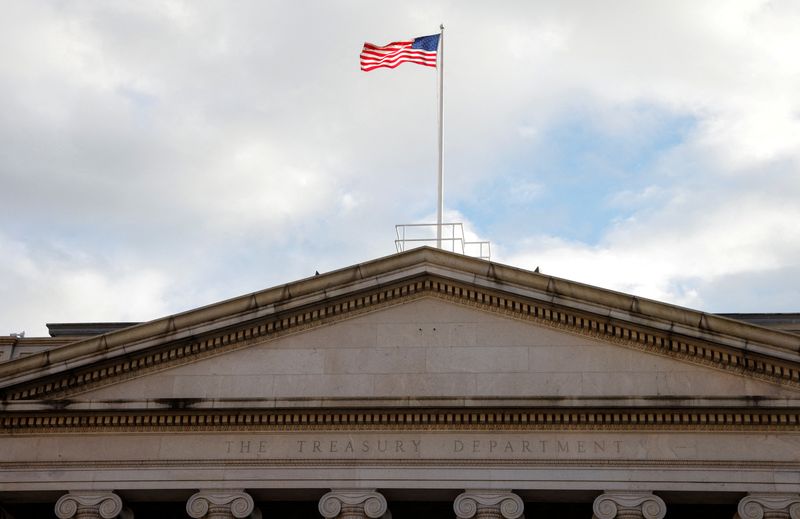By Gertrude Chavez-Dreyfuss
NEW YORK (Reuters) - Spreads on U.S. interest rate swaps over Treasuries tightened or turned more negative on Monday as long-term investors hedged their exposure in the swaps market to position for lower interest rates in a sign of concern over the sharp sell-off in stocks.
In late trading, the spreads were mixed.
U.S. swaps measure the cost of exchanging fixed rate cash flows for floating rate ones over a specific time frame.
A swap spread is expressed as the basis-point difference between the fixed rate of a swap tied to the Secured Overnight Financing Rate (SOFR) and the Treasury yield of the same maturity. That spread also takes into account the cost of financing a long or short position in Treasuries.
In general, a tighter spread means the cost of funding Treasuries is higher compared to swaps.
At the height of the meltdown earlier in the session, when stocks sold off sharply and U.S. Treasury yields dropped, swap spreads were tighter across the curve that could have been driven by hedging flows, analysts said.
The spread on 10-year U.S. swaps over 10-year Treasuries fell as much as -45.75 basis points (bps) on Monday, from -44.30 bps late on Friday. It settled at -44 bps as Treasury yields sharply came off their lows and for some maturities were even higher.
U.S. 20-year swap spreads went as low as -78 bps and were last -76.75 bps, tighter or more negative on the day.
"Very often what you'll see is that very large declines in equities lead to receiving needs in swaps, which ... move swap spreads as well," said Gennadiy Goldberg, head of U.S. rates strategy, at TD Securities in New York.
Receivers in swaps, or the counterparty receiving a fixed-rate payment, benefit if interest rates fall and lose if interest rates rise.
"That's because variable annuity (VA) and fixed index annuity (FIA) accounts will behave more in a fixed income fashion once equities go sharply lower. They could be positioning themselves and hedging more than they usually are, which tends to tighten swap spreads during periods like this."

Major U.S. stock indexes fell sharply on Monday, with the Nasdaq down more than 3%, as U.S. recession fears spooked global markets and drove investors out of risky assets. Recession worries followed softer-than-expected economic data last week, including Friday's U.S. payrolls report.
U.S. Treasury yields, meanwhile, rebounded from one-year lows as panic eased a little bit after data showed a recovery in U.S. services sector index.